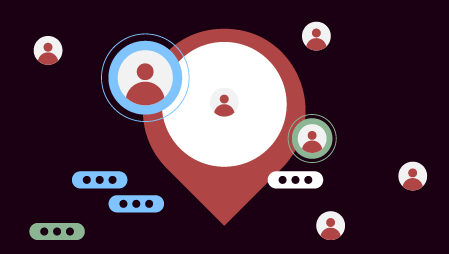Just a few months ago, I wrote an article about human and machine partnerships in the workforce. Hosts of companies, from CVS to McDonald’s, were already using AI to enhance their human workforce with superhuman new efficiencies while also delivering premium customer experiences and cost savings.
Fast forward a few months and throw a global pandemic into the mix, and that machine-enhanced human workforce model has transformed from an emerging trend to business necessity.
One of the most obvious benefits of employing robot “helpers” is that they cannot get sick, and are therefore able to take over risky jobs that would otherwise endanger human workers through frequent or prolonged physical contact with others.
For this reason, I believe COVID-19 may be the catalyst for an inflection point in the growth of human-machine workforce collaboration. The following is a brief overview of how this particular tech segment is likely to expand in the coming year.
The Rise of Big Butler
In 2019, my colleague Olivier Blanchard and I published a book called Human/Machine. In it, we discussed three archetypal uses of technology:
- Big Brother: technologies used to surveil and collect data for possibly nefarious or exploitative purposes.
- Big Mother: technologies used to surveil and collect data for altruistic purposes, albeit in an overbearing or intrusive way.
- Big Butler: Technologies used to serve users, enhance their productivity, protect their privacy, and augment their abilities.
Of the three, Big Butler is the safest and most transparent category of technology uses, particularly for the general public. It is also the one seeing the most growth in response to COVID-19 and the challenges it presents for organizations, workers, and everyday people.
Let’s explore a few different ways that companies are using ‘Big Butler’ technologies and discuss why they are likely here to stay:
Chatbots Find Their Footing
From commerce and banking to healthcare and the government, the use of chatbots has increased dramatically in recent months, as the technology is being employed to fill the void left by absent personnel in either understaffed or locked-down customer service centers.
Among other capabilities, chatbots can answer customer questions, share information, and help employees spend more time on high-value tasks. Before the pandemic broke out, it was predicted that 80% of companies planned to invest in chatbot technology by the end of 2020.
As chatbots have proved their value as part of the human and machine workforce, that estimate may need to be adjusted upward.
Assistive Robots Have a Role Now
Investments in robotics have also surged in recent months. In some hospitals in South Korea, for instance, robots have been assisting with patient care inwards where resources were spread thin.
Caregivers and medical robots can perform valuable tasks like taking temperatures and distributing hand sanitizer, freeing up hospital staff to deal with more critical patients and specialized tasks.
Healthcare isn’t the only industry turning to robots to fill gaps in manpower. Walmart is also employing robots to mop floors, for instance, and a San Diego-based robotics company has seen a 13% increase in orders for their autonomous floor-cleaning robot since the start of the year.
Hotels are also using sanitizing robots equipped with powerful UV lights to eradicate pathogens and keep staff and guests safe.
AMP Robotics has also seen an increase in orders for robots that use artificial intelligence and machine learning to sift through recycled material and dispose of garbage — a job that used to be assigned to human workers.
These small changes might have seemed like a pipe dream a year ago for many companies, but now these same companies are realizing the vital role robots can play.
Automation Spending Will Increase
A recent study from Honeywell found that more than half of US companies are willing to increase their automation investment to survive the market changes brought on by COVID-19.
We’ve already seen that increase happens in robotic process automation spending. In Q1, UIPath gained more than 800 customers by helping them deploy new models of business continuity in this unexpectedly disruptive period. Some believe RPA spend will hit $25 billion by 2025—it’s just $3.6 billion today.
Human and Machine Workforce Going Forward
Many articles these days play to a common fear-mongering trope that paints robots and automation technologies as vehicles of massive job loss and widespread human replacement.
While it is true that some jobs will inevitably be automated and some human workers displaced, the impact of smart automation technologies on employment is unlikely to be as dire as these articles tend to predict. Instead, I believe that the vast majority of smart automation technologies will instead augment the human workforce:





